Endemic Birds of Puerto Rico
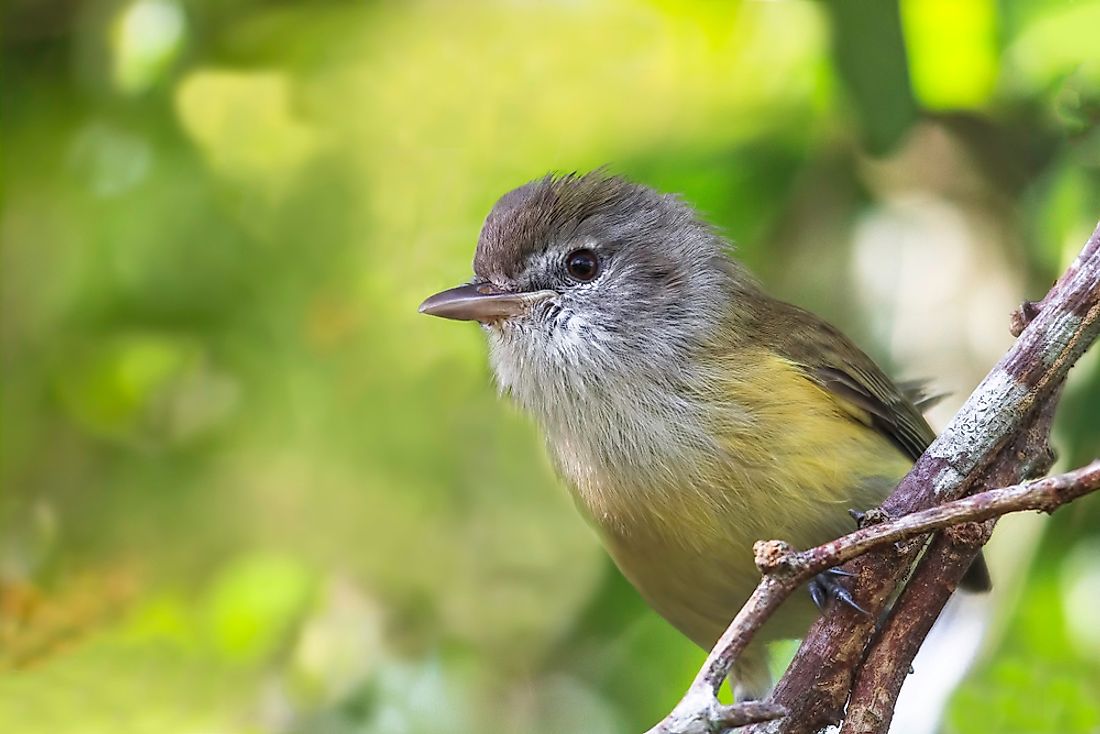
The Island of Puerto Rico is home to more than 300 species of birds out of which only 18 are endemic. The birds are found in various parts of the island including its two island municipalities of Vieques and Culebra. These birds face different threats within their environments with the major ones being habitat destruction due to human activities. While some birds adapt to disturbed habitats, others decline in population, face constant threats of extinction, and have to be placed under protection.
18. Adelaide's Warbler
The Adelaide’s warbler (Dendroica adelaidae) is listed as least concern species endemic to the dry to moist forests of southern and central parts of Puerto Rico. The warbler’s upper body is grey while the underside is yellow. The small Adelaide’s warbler measures about 5 inches and weighs about 0.25 ounces. The bird forages through gleaning for insects, spiders, and small amphibians. Insects are the primary dietary source for the Adelaide’s Warbler.
17. Puerto Rican Flycatcher
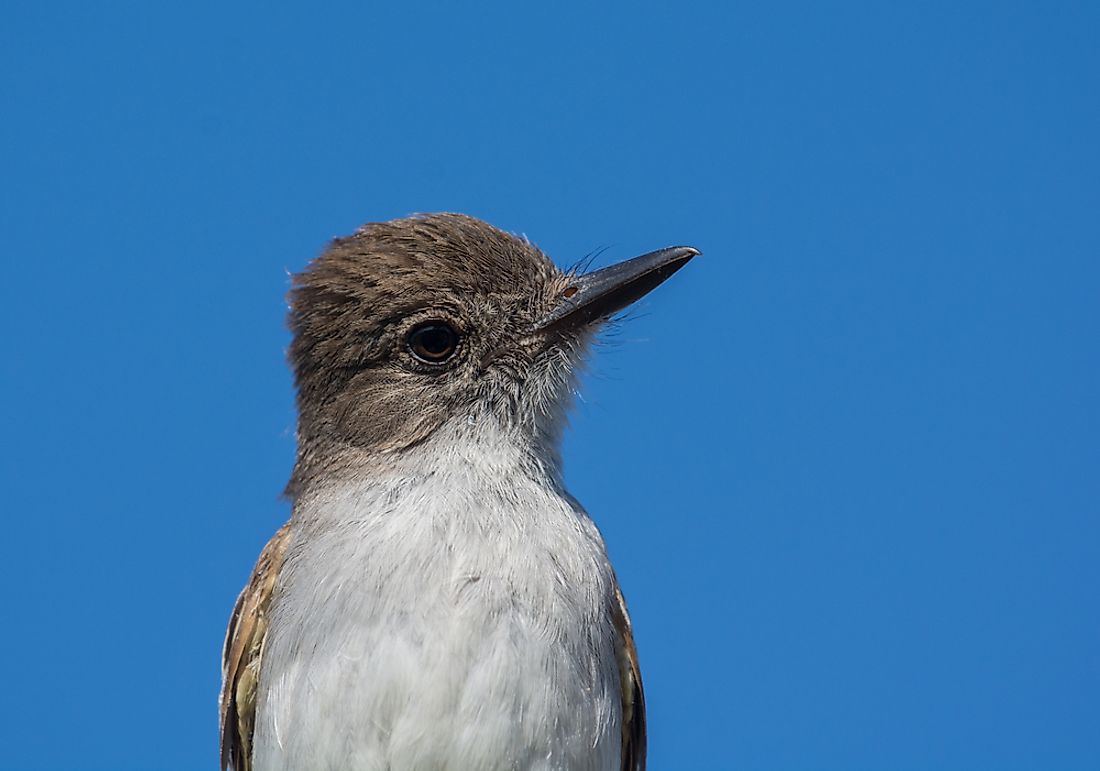
The Puerto Rican flycatcher (Myiarchus antillarum) is a medium-sized bird with males being generally larger than females. The upper body of the bird is darky sooty brown, with pale greyish brown to white edges. The belly is mostly white. The bird is endemic to Puerto Rico and is found in deciduous forests, arid lowland scrub, and mangrove forest. Its major diet consists of insects supplemented with seeds and berries. Breeding occurs between February and June.
16. Elfin-woods Warbler
The elfin-woods warbler (Dendroica angelae) is an endangered and uncommon bird endemic to the elfin forests of Puerto Rico. The warbler forages in middle canopy through gleaning, probing, and sally hovering in search of food. The elfin-woods warbler forages in groups, which may include other species of warblers. Pearly-eyed thrasher and the Puerto Rican sharp-shinned hawk predate upon the elfin-woods warbler, which along with habitat destruction pose major threats to the populations of the warbler.
15. Green Mango
The Green mango (Anthracothorax viridis) is a large hummingbird endemic to the mountainous regions of Puerto Rico. The bird's upper body is emerald green with a metallic blue-green underside. Both sexes are similar although females are generally less glossy. Females may also have a small white tip on their tail end. They feed on nectar from flowers of trees, shrubs, and vines. Breeding among the green mango occurs between October and May.
14. Puerto Rican Lizard Cuckoo
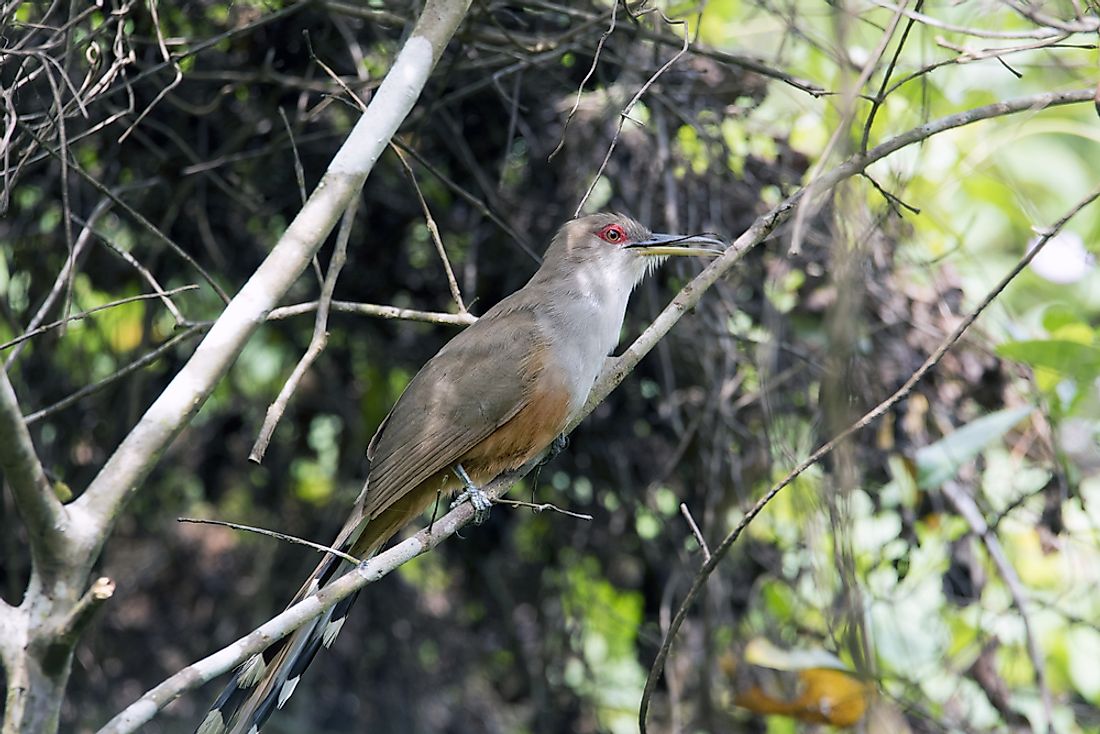
The Puerto Rican lizard cuckoo (Coccyzus vieilloti) is a least concern species found in Puerto Rican woodlands, coffee plantations, forests, and throughout the island. The bird feeds predominantly on lizards, supplementing its diet with insects, beetles, caterpillars, and large spiders. The lizard cuckoo generally moves very slowly when foraging and typically flies in a direct line. The bird has a brown upper body, a tan underside, and a grey breast and chin.
13. Puerto Rican Bullfinch
The Puerto Rican bullfinch (Loxigilla portoricensis) is a small bird endemic to the heavy forests of Puerto Rico. The bird has a black body with red patches on the crest, around the throat, above the eyes, and below the tail base. The bullfinch feeds primarily on insects, fruits, seeds, and spiders. The Puerto Rican bullfinch has an average length of 6-7 inches and weighs about 1.2 oz.
12. Puerto Rican Emerald
The Puerto Rican emerald (Chlorostilbon maugeaus) is listed as least concern hummingbird species endemic to the mountainous areas of Puerto Rico. The hummingbird mainly breeds from February to May, although breeding may still occur at other times of the year. They make their nests from twigs and grasses. The Puerto Rican emerald is territorial and fiercely protects its territory from intruders. Its diet consists of spiders, insects, and nectar.
11. Puerto Rican Spindalis
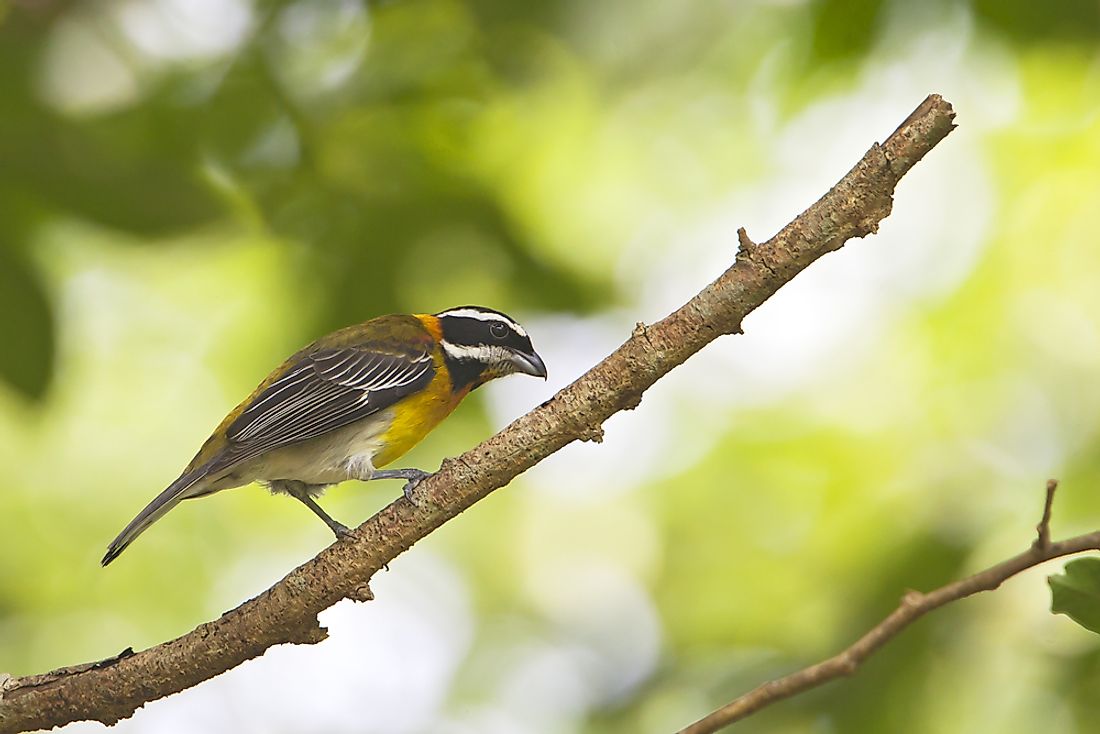
The Puerto Rican spindalis (Spindalis portoricensis) is a small bird with an average weight of 1.1 oz in males and 1.2 oz in females. The least concern species occupies many regions throughout the island including forests, plantations, and gardens. The bird’s ability to adapt even in disturbed habitats has played a key role in its population stability. The Puerto Rican spindalis feeds on seeds, fruits, and leaves. The bird plays an important role in seed dispersal and plant reproduction.
10. Puerto Rican Nightjar
The Puerto Rican nightjar (Caprimulgus noctitherus) is an endangered bird endemic to the coastal dry scrub forests of Puerto Rico. The nightjar is a small bird with a plumage, which may have grey, brown, and black mottles. Its coloration helps the nightjar in camouflaging on the ground. The bird forages in-air feeding on insects, beetles, and moths. The breeding season for the Puerto Rican nightjar is between April and June, with females laying a clutch of two eggs, in nests on the ground. These nests are made from many leaves and located under closed canopies.
9. Puerto Rican Oriole
The Puerto Rican oriole (Icterus portoricensis) is a new world blackbird endemic to the tropical and mangrove forests of Puerto Rico. The bird shows a preference for palm trees. The Puerto Rican oriole forages in thick vegetation in search of lizards, fruits, insects, nuts, and grains. The Puerto Rican oriole is a monogamous bird, which typically breeds between February and July, laying a clutch of three eggs. During the breeding seasons, the young ones stay together in family groups.
8. Puerto Rican Tody
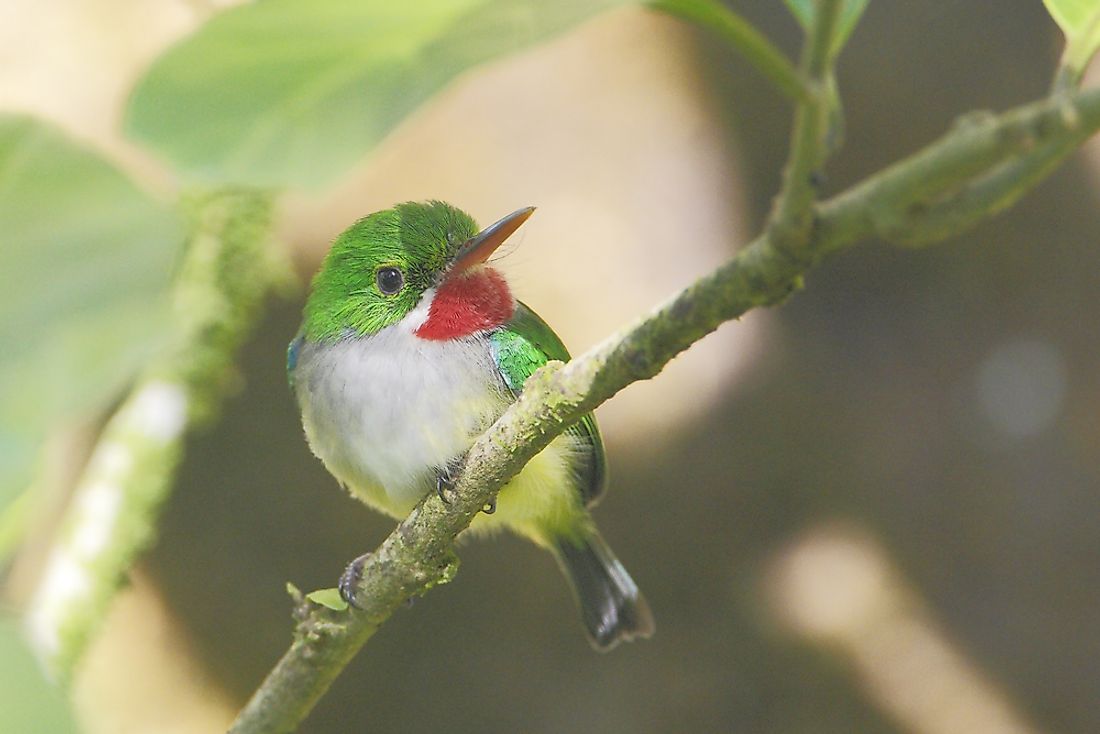
The Puerto Rican tody (Todus mexicanus) is least concern insectivorous species endemic to the Puerto Rican island. The bird occupies high altitude forested areas in the island. The tody is a small bird with an emerald green upper body, white belly and chest, red throat, red lower bill, and brownish legs. Males have grey eyes unlike the white ones in females. While its diet is primarily insectivorous, the Puerto Rican tody sometimes feeds on small lizards, spiders, frogs, and beetles. The tody forages through leaf-feeding and air-feeding.
7. Puerto Rican Parrot
Also called the Puerto Rican Amazon, the Puerto Rican parrot (Amazona vittata) is a critically endangered species endemic to Puerto Rico. Its population status is due to widespread destruction of its native habitat. The parrot is the only native parrot still present in the country. The parrot is generally small with a length of between 11 and 18 inches and weighs an average of 9.7oz for both sexes. The body of the parrot is covered in green feathers with a blue coloration on the underside edge of the wings.
6. Puerto Rican Pewee
The Puerto Rican pewee (Contopus portoricenis) is a resident mainly found in the montane forests of Puerto Rico. The bird is predominantly insectivorous and forages in open areas beneath forest canopies. The bird is listed as least concern species, which breeds between March and June. They lay a clutch of two eggs, which vary from cream to dark cream. The Puerto Rican pewee has a dark olive-brown upper body with a lighter underside.
5. Puerto Rican Woodpecker
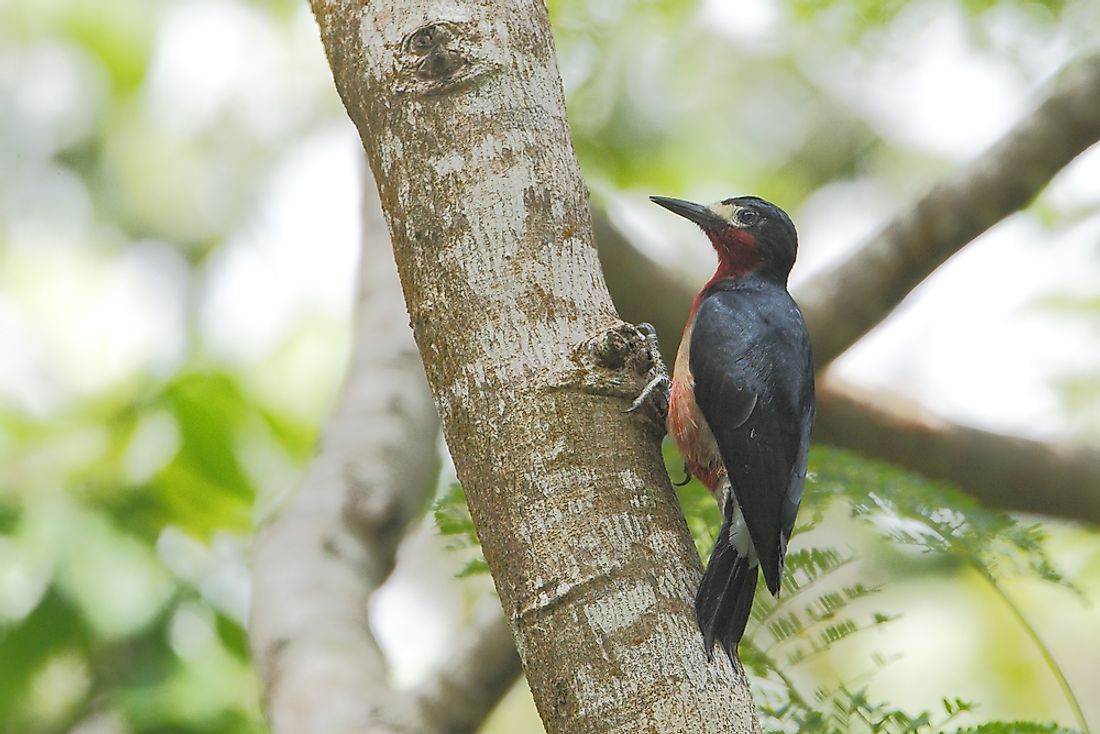
The Puerto Rican woodpecker (Melanerpes portoricensis) is a least concern species found within many habitats within Puerto Rico and the only woodpecker endemic to the country. The woodpecker’s body is mainly black with a red throat and a white patch running across to each eye. The males of this bird are generally larger than females. For both genders, the average length varies between 9 and 10.8 inches and a weight of 1.92oz. The woodpecker primarily drills tree trunks with its bill in search of insects. It also feeds on fruits, and on rare occasion eats scorpions and geckos.
4. Puerto Rican Screech Owl
The Puerto Rican screech owl (Megascops nudipes) is a small owl endemic to the island. The owl is a nocturnal species that feeds mainly on large insects, geckos, small birds, small rodents, and lizards. The upper body of the owl is brown with the underside varying from light brown to white. Both sexes are generally of the same size with an average body length of 7.9 inches, an average wingspan of 61 inches and a weight of between 3.6 and 5.4 oz.
3. Puerto Rican Tanager
The Puerto Rican tanager (Nesospingus speculiferus) is a small passerine endemic to the montane forests of Puerto Rico, especially in mid-high elevation areas. The tanager has a small body measuring 7-8 inches with a weight of about 1.3 oz. The tanager feeds on insects, fruits, lizards, spiders, snails, centipedes, and snails. The Puerto Rican tanager forages large communal roosts, especially among bamboo and palms. Sometimes, these roosts consist of other species of migratory winter birds. The main breeding season for the Puerto Rican tanager lasts between January and July during which the tanager becomes very protective of its territory.
2. Yellow-shouldered Blackbird
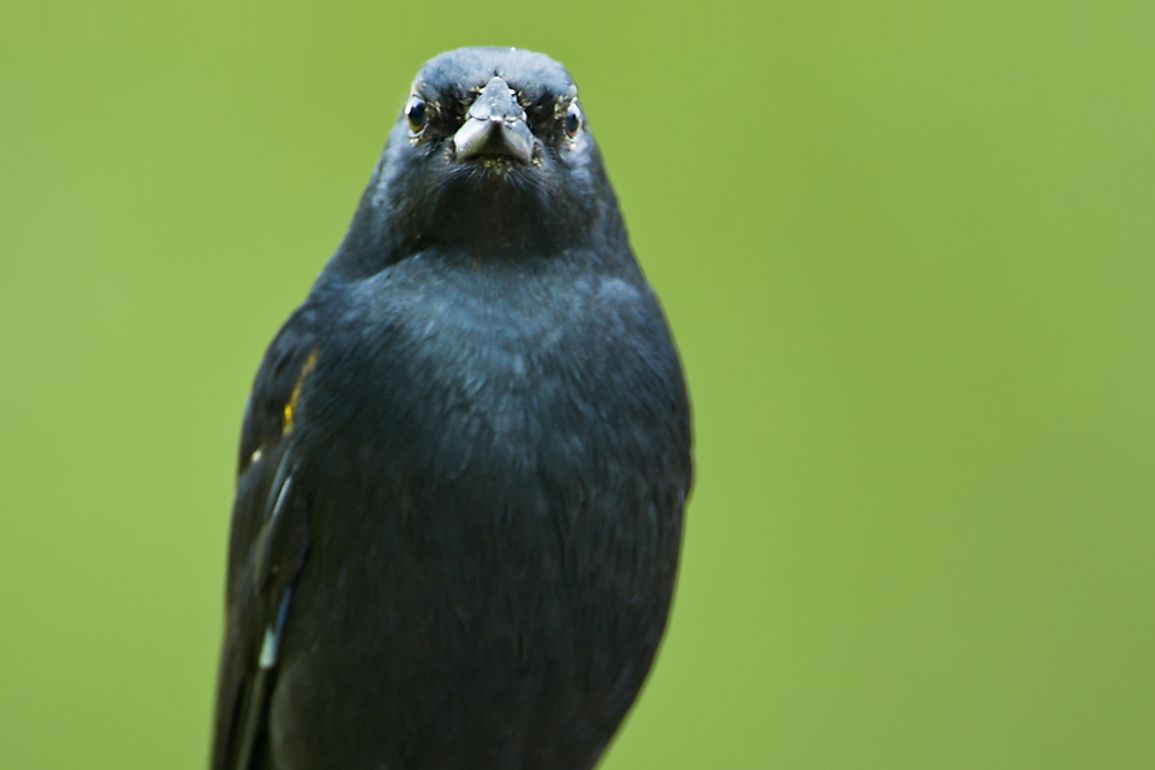
The yellow-shouldered blackbird (Agelaius xanthomus) is an endangered diurnal blackbird found in the Puerto Rican coastal forests. The insectivorous bird has a predominantly glossy-black body with a yellow patch on the shoulder for both males and females. Males are on average larger than females weighing 1.4oz and with a wingspan of 40 inches. Females weigh an average of 1.2oz and a wingspan of 36.7 inches. The yellow-shouldered blackbird is currently limited to Mona and Monito islands and the Roosevelt Roads naval station.Sugarcane farming in the coast has played a significant role in the destruction of the blackbird’s habitat.
1. Puerto Rican Vireo
The Puerto Rican vireo (Vireo latimeri) is a least concern insectivorous bird found in the central and western parts of Puerto Rico. The vireo is a small bird weighing about 0.42 oz and has an average length of 4.72 inches. Although the bird’s population is still widely distributed in Puerto Rico, predation by the shiny cowbird has led to a decline in their populations. The bird forages mainly in thick vegetation closer to the ground. The Puerto Rican vireo is intolerant to intrusion in its nesting areas and will respond through active scolding and attack of any intruders.
Endemic Birds of Puerto Rico
| Rank | Common Name | Scientific Name | Conservation Status |
|---|---|---|---|
| 1 | Adelaide's warbler | Dendroica adelaidae | Least Concern |
| 2 | Puerto Rican flycatcher | Myiarchus antillarum | Least Concern |
| 3 | Elfin-woods warbler | Dendroica angelae | Endangered |
| 4 | Green mango | Anthracothorax viridis | Least Concern |
| 5 | Puerto Rican lizard‑cuckoo | Coccyzus vieilloti | Least Concern |
| 6 | Puerto Rican bullfinch | Loxigilla portoricensis | Least Concern |
| 7 | Puerto Rican emerald | Chlorostilbon maugeaus | Least Concern |
| 8 | Puerto Rican spindalis | Spindalis portoricensis | Least Concern |
| 9 | Puerto Rican nightjar | Caprimulgus noctitherus | Endangered |
| 10 | Puerto Rican oriole | Icterus portoricensis | Least Concern |
| 11 | Puerto Rican tody | Todus mexicanus | Least Concern |
| 12 | Puerto Rican parrot | Amazona vittata | Critically Endangered |
| 13 | Puerto Rican pewee | Contopus portoricenis | Least Concern |
| 14 | Puerto Rican woodpecker | Melanerpes portoricensis | Least Concern |
| 15 | Puerto Rican screech owl | Megascops nudipes | Least Concern |
| 16 | Puerto Rican tanager | Nesospingus speculiferus | Least Concern |
| 17 | Yellow-shouldered blackbird | Agelaius xanthomus | Endangered |
| 18 | Puerto Rican vireo | Vireo latimeri | Least Concern |







